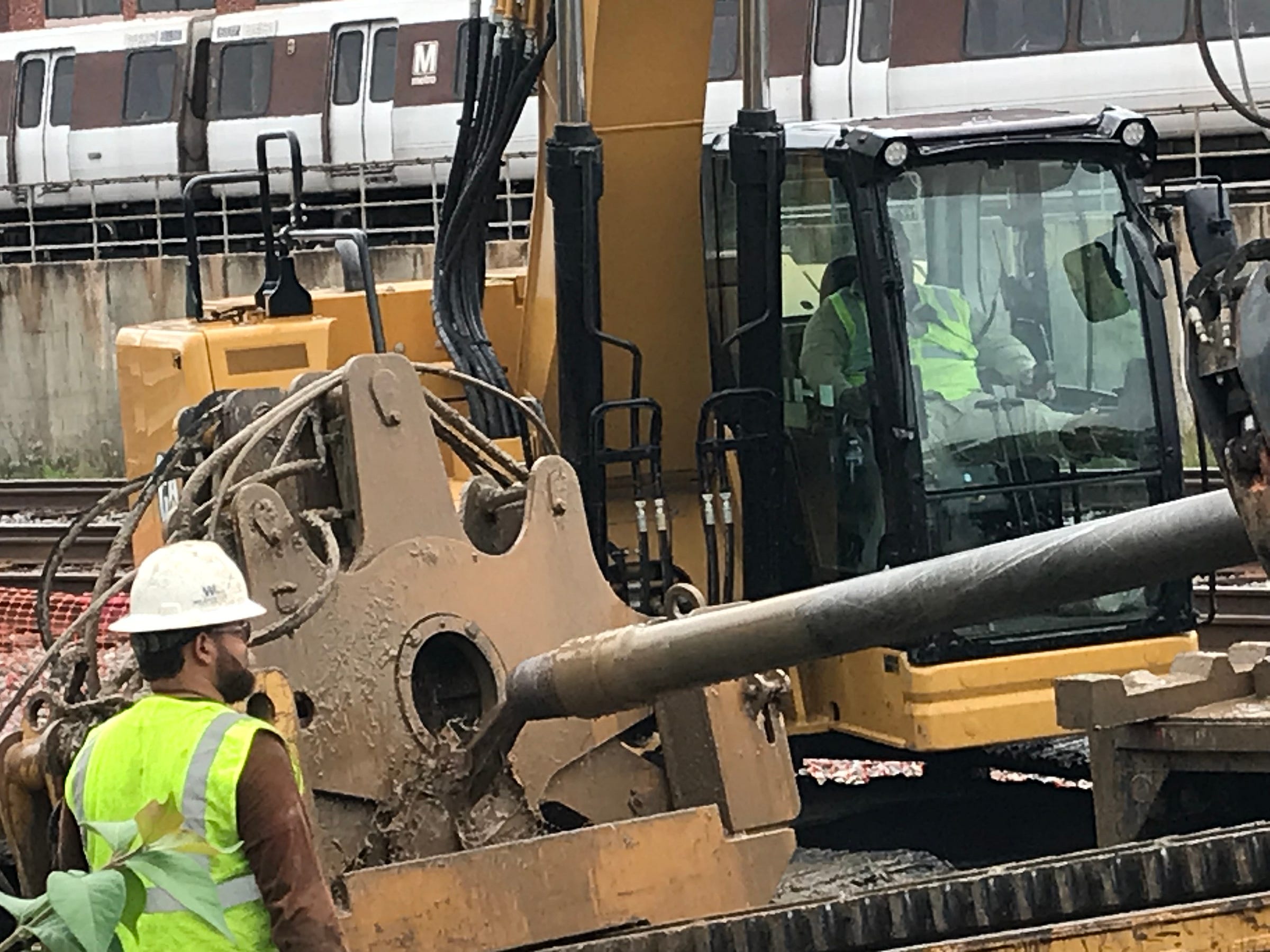Alexandria's Invisible Infrastructure
A segment of a critical jet fuel pipeline is replaced and relocated ahead of railway expansion in the city.
Alexandria’s history and identity are closely tied to transportation. The city hosts parts of the Interstate Highway System, flights to and from Washington Reagan Airport, railroad lines that include four Metro stations, and maritime traffic on the Potomac River.
Some of the city’s important transportation infrastructure is invisible because it is underground, but parts of it have been visible recently.
Jet Fuel for the Airports
The work being performed by MidShip Pipeline Company to replace and relocate a segment of a pipeline in the railroad right-of-way off Main Line Boulevard behind George Washington Middle School is an example of the city’s important, but invisible, infrastructure. The pipeline carries jet fuel from refinery facilities in Louisiana and Mississippi to Washington Reagan and Dulles airports.
Workers are installing the pipeline in a constrained area in the right-of-way west of the tracks. Here, a crane lifts a section of the pipe into place for installation.
Workers at the site explained that the pipeline is being buried 80 feet underground to avoid conflicts with other utilities buried in the railroad right-of way. The pipeline will continue to deliver fuel to the airports while a segment of it is replaced and relocated.
The pipeline installation equipment that readies pipe segments for placement underground is massive.
The pipeline installation involves the use of water under pressure. Pictured below is one of the periodic water discharges.
Kinder Morgan’s Project Pipe Line System
The pipeline is owned by Houston, Texas-based Kinder Morgan, Inc. and is part of the company’s Products Pipe Line system, formerly known as the Plantation Pipeline.
Kinder Morgan describes itself as “...the largest independent transporter of petroleum products in North America, transporting approximately 2.4 million barrels per day.” Kinder Morgan’s operations through its 79,000 miles of U.S. pipelines, of which 9,500 miles are dedicated to petroleum products, are described in more detail on its website which is viewable
Here is how Kinder Morgan describes its Products Pipe Line system:
PPL is one of the largest refined petroleum products pipelines in the United States. It is capable of delivering approximately 720,000 barrels per day of gasoline, jet fuel, diesel and biodiesel through its approximately 3,180-mile pipeline network which originates in Louisiana and ends in the Washington, D.C. area. Along the way, it serves various metropolitan areas, including Birmingham, Alabama; Atlanta, Georgia; Charlotte, North Carolina; and the Washington D.C. area.
PPL connects to 90 delivery terminals throughout eight states. Products come in to the PPL system from nine refineries in Mississippi and Louisiana, from other products pipeline systems, and via marine facilities on the Mississippi River. Products handled include motor gasoline, diesel (including biodiesel), kerosene, and commercial and military jet fuels.
PPL receives products in batches for fungible movements which are shipped through lines ranging in size from 6-inches to 30-inches in diameter…A batch leaving Baton Rouge, Louisiana, may travel as much as 1,100 miles to reach a final destination such as National or Dulles airports. Total travel time for such a trip is approximately 20 days. Products can be efficiently transported from Baton Rouge to a shipper’s facility in Washington, D.C. for under three cents per gallon.
Coming Soon: The Fourth Track Project
The pipeline work opens the way for additional changes to the railroad right-of-way to accommodate rail traffic. That work includes the addition of a fourth track between Alexandria and Arlington. The Virginia Passenger Rail Authority describes the project this way:
The Alexandria Fourth Track project will design and construct 6.0 miles of railroad track and related infrastructure in Arlington and Alexandria, Va. The project extends between the southern end of [the railroad bridge over the Potomac River]…and will add one additional track to the existing three-track segment.
Currently, on the southern end of the project area, west of Alexandria Station, three tracks from the Virginia Railway Express (VRE) Fredericksburg Line and two tracks from the VRE Manassas Line converge into three tracks, causing a bottleneck and delays for passenger and freight trains. The existing tracks will be shifted, and a new fourth track will be added, all within the existing right-of-way. The results will separate freight and passenger trains and add capacity and efficiency traveling north into Arlington and Washington, DC. The design also accommodates station and platform improvements planned by VRE for the Alexandria and Crystal City passenger stations.






Wow! Interesting stuff, and kudos to you for collecting it all and putting the story together.